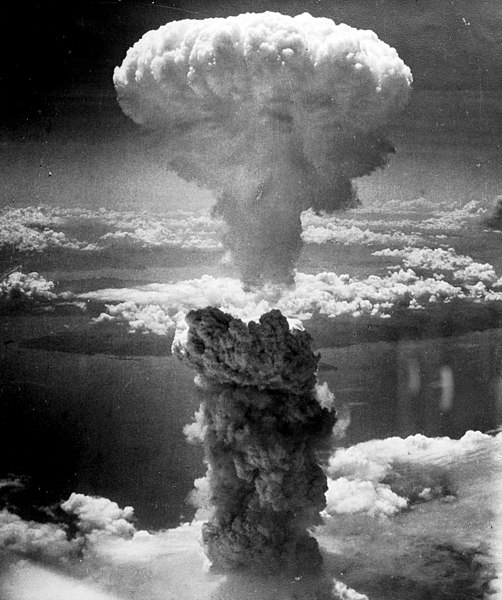A mushroom cloud is a distinctive mushroom-shaped flammagenitus cloud of debris, smoke, and usually condensed water vapor resulting from a large explosion. The effect is most commonly associated with a nuclear explosion, but any sufficiently energetic detonation or deflagration will produce the same effect. They can be caused by powerful conventional weapons, like thermobaric weapons such as the ATBIP and GBU-43/B MOAB. Some volcanic eruptions and impact events can produce natural mushroom clouds.
Ascending cloud from Redoubt Volcano from an eruption on April 21, 1990. The mushroom-shaped plume rose from avalanches of hot debris (pyroclastic flows) that cascaded down the north flank of the volcano.
Mushroom cloud from the atomic bombing of Nagasaki, Japan on August 9, 1945.
Vue du siège de Gibraltar et explosion des batteries flottantes View of the Siege of Gibraltar and the Explosion of the Floating Batteries, artist unknown, c. 1782
Mushroom cloud in an engraving from Gerhard Vieth's Physikalischer Kinderfreund (1798)
A nuclear explosion is an explosion that occurs as a result of the rapid release of energy from a high-speed nuclear reaction. The driving reaction may be nuclear fission or nuclear fusion or a multi-stage cascading combination of the two, though to date all fusion-based weapons have used a fission device to initiate fusion, and a pure fusion weapon remains a hypothetical device. Nuclear explosions are used in nuclear weapons and nuclear testing.
A 23 kiloton tower shot called BADGER, fired on April 18, 1953, at the Nevada Test Site, as part of the Operation Upshot–Knothole nuclear test series.





